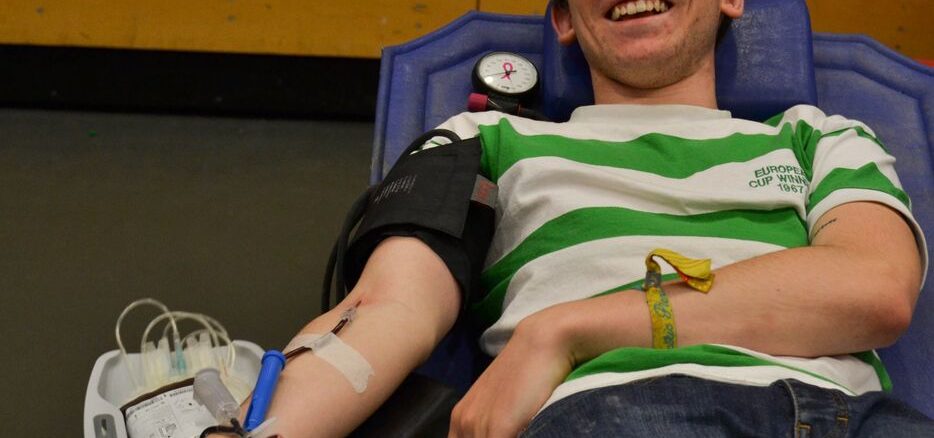
Tapping feet, twiddling thumbs and the all too familiar rattling of cheese and onion Tayto packets are just three of the various components of a blood donation clinic.
I’ve been a donor for over two years now and it’s honestly one of the best and most rewarding situations you can get yourself into.
Yes, there’s the dreaded needle, and yes, you are going to see blood in tubes and packets everywhere, but don’t think of the cons, what about the pros?
When talking to people about donating blood the one thing that always seems to concern them is the infamous haemoglobin levels.
Before you can donate blood, you must pass a haemoglobin level, with anything more than 12.5g/dl being an adequate amount for women and 13.5g/dl for men.
However, it is not uncommon for both men and women to have trouble in controlling an appropriate amount in their blood.
Anaemia, while is most common in women, affects both genders and can be treated simply by diet or taking iron tablets available in any good pharmacy.
However, if the condition is severe, it is best to go to your GP to receive a dose of injections. This may be up to five injections, and may be spread out over five weeks. After a few months of finishing treatment, you should be eligible to donate.
I myself went through a phase of having low ferritin iron levels. Unlike, anaemia which relates to the red blood cells, and in turn the haemoglobin levels, ferritin iron refers to the iron storage protein in your body and can only be detected by taking a blood test.
Luckily, it is treated similar to anaemia – by maintaining a healthy diet high in iron as well as taking the iron supplements.
Having told the donation clinic doctor that I had just undergone the treatment for low ferritin levels, my blood was refused and I was told to come back when my store was at a healthy level.
To the other extreme, you have haemochromatosis, a condition whereby the patient has an iron overload in his or her body.
A lot of people are under the false impression that haemochromatosis patients cannot donate blood, but really it’s no big deal.
In August 2013, The Irish Blood Transfusion Service opened a clinic on D’Olier Street in Dublin, and later St Finbarrs Clinic in Cork where people affected by the condition are free to donate. The only requirements needed are proof of a diagnosis of hereditary haemochromatosis by your GP, as well as a prescription form signed by your doctor for the phlebotomy.
The Irish Blood Transfusion Service will revisit DCU in the New Year, so what are you waiting for? Start eating your green vegetables and red meat, there are no excuses.
Emily Crowley
Image Caption: DCU Engineering student Séamus Doherty donates blood
Image Credit: Chaitanya Brady

Leave a Reply